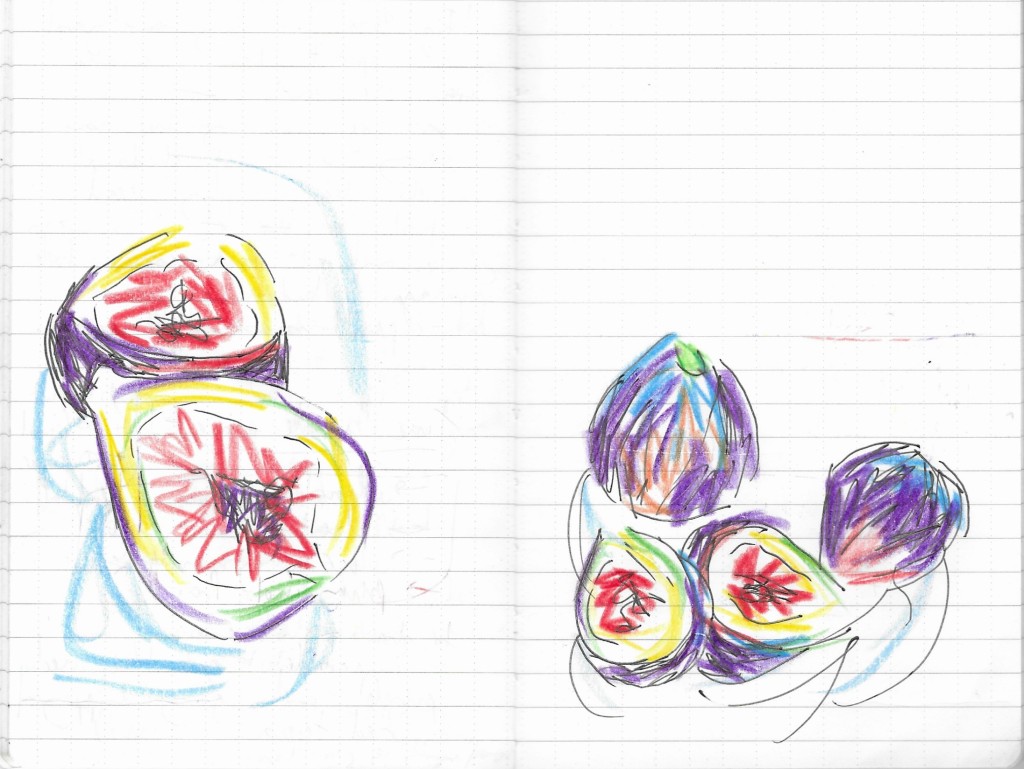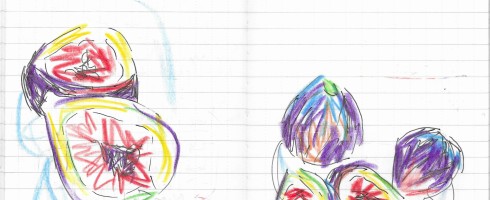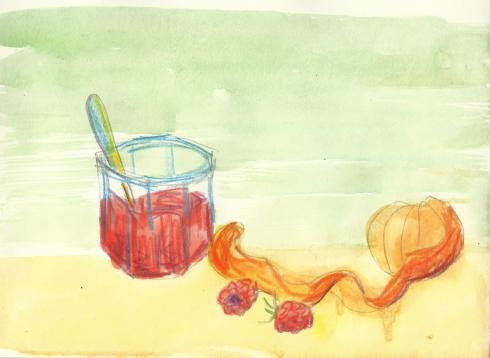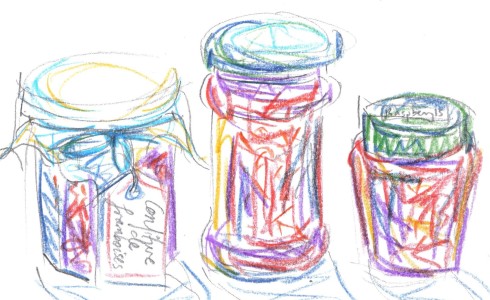
At the house in the south, there is a cupboard full of jam, dating back to 2012. Some of the jars have gone black but not mouldy, some have lost their labels. Sometimes the sugar crystallises, the size and shape of forget-me-nots, floating white in the dark.
~~
The figs were small and green and tight even after a week of scorching heat and a series of storms. And then they ripened all at once, blushed purple.
The sweetest ones were too delicate to pick, their skin tearing at the stalk, staining my fingerprints. Stretch marks drew lines down from the point, a hint at the red flesh within. There were only two days left, not long enough to get sick of figs: a handful for breakfast, wrapped in ham for lunch, over salad and blue cheese for supper. So, I spent a last afternoon making jam. To pretend the summer was not over, to try to bottle a sunset or fluffy clouds in a blue sky. To stamp a memory while it was still fresh, at the risk of spoiling it, smudging its outline in the printing. Jam is delicious, but it is not the same as fresh fruit.
The row of jars were supposed to keep the panic at bay. Here is a shelf of summers. Here is colour and sweetness for winter breakfasts, a spoonful every morning in yoghurt, on a slice of bread.
~~
I wrote down, opening a homemade jar of jam is like celebrating a birthday rather than letting it go unremarked.
Jam is an existential crisis when you model yourself on a cartoon badger, is a real note I took that day. (See the children’s book ‘Bread and Jam for Frances,’ about which I am sure I have written before but I refuse to check.)
I spent a lot of my summer thinking about memory. I made a Time Capsule Project, in which friends posted me one memory of the two of us. I pitched it as primary school Proust. It was strange to receive a dozen envelopes addressed in my own handwriting, stranger not to open them. The collection fits in a blue biscuit tin, and I will read the cards in ten years’ time. In the meantime I have the winter to return the favour and send back a sealed memory to each person. Maybe we will write down the same one.
I take notes and make lists in my head because what if this is the last time? What if I forget, what if the other person is no longer there one day? As if there were an if in that equation?
~~
The kitchen window overlooked the garden and the shorn fields and the fig tree on the border between. The grass had dried to straw at this point, under crackled brown chestnut leaves that fell too early. In the pan, figs collapsed into petals in a speckled red liquid. Like distilling a bouquet.
I made one batch with half a pot of espresso as the base, and another with the juice of a lemon, its empty halves thrown in with the figs to steep.
The basic formula is 1 kilo of fruit, 100ml (10%) water or other liquid, cook until the fruit softens. (Optional: at this point, blend half with a stick blender for a thicker consistency.) Add 750g (or 75%) sugar and bring to a boil. Let it bubble until it sounds like lava, and drips slowly from a spoon.
I read a book with one hand as I mixed it slowly. I waited for the sound and size of the bubbles to tell me the exact moment when summer was fixed in amber, when to fill the jars and turn them upside down and wait again. One version was slightly more tawny, one a brighter red. Both tasted of sugar first, then figs, and behind, the ghost of something else. I gave some of the jars away. I haven’t opened mine yet.
~~
In my courtyard at home, a small fig tree is growing in a pot. It is now as high as my hip. It sprouted from the original and I carried it back on the train three years ago. The first winter it shed all of its leaves and I thought it was dead. The week that it was warm enough for a morning coffee outside, its buds appeared, paint brushes dipped in green ink.
~~
I missed writing, and drawing. Figs are laughably obscene to draw, impossible to copy the soft suede outside and red cilia within. But I enjoyed trying, and then eating my life models.




